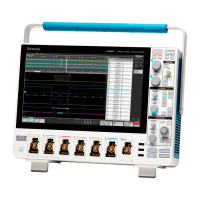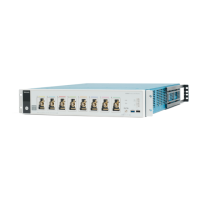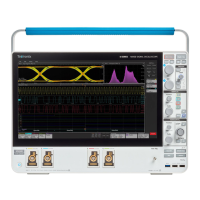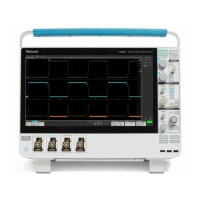Note that overshoot values should never be negative (unless T
op or Base are set out-of-range).
Positive Overshoot measurement algorithm
Positive Overshoot is the difference between Maximum and Top, divided by the amplitude. It is the percent that the waveform goes above
top.
Note that this value should never be negative.
Peak-T
o-Peak measurement algorithm
Peak to peak is the difference between Maximum and Minimum.
PeaktoPeak = Max – Min
RMS measurement algorithm
RMS is the true root mean square of the data points.
Top measurement algorithm
Top is calculated using the selected Base Top method. Top is the most common data value above the midpoint of the waveform, when the
default Base Top method Histogram Mode is selected. This measurement can be made across the entire record or on each cycle in the
record.
Time measurement algorithms
Burst Width measurement algorithm
Burst Width is the duration of a series of adjacent crossings of the mid reference level. The duration of a burst. Bursts are separated by a
user-defined idle time.
Data Rate measurement algorithm
Data Rate is the reciprocal of Unit Interval. This measurement is made on each bit in the record.
Delay measurement algorithm
Delay is the time between a mid reference level edge on one source to a mid reference level edge on a second source. The direction of
each edge can be configured by the user.
Falling slew rate
Falling Slew Rate is the rate of change in value as an edge transitions from the high or mid reference level to the mid or low reference
level. The levels are configurable.
Measurement algorithms
258
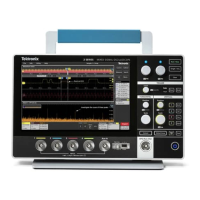
